One of Italy’s most popular destinations for international travelers and a UNESCO World Heritage site, the Amalfi Coast is one of the most stunning corners of Earth. However, considering that its relatively small geographic size and limited infrastructure currently serve five million annual visitors, the coast’s ever-growing popularity poses challenges for tourists, particularly during high season. Experiencing the rocky coastline is more than worth working your way along the SS163 Highway that links Amalfi’s 13 coastal towns, though proper research and planning are essential if you don’t want to spend the majority of your day lining up to actually see, eat, or do anything. If you’re planning on visiting, here are a few tips to keep in mind to make the most of your trip.

11 Things You Need to Do to Get the Most Out of the Amalfi Coast
1. Visit in September or October… or pretty much anytime besides May through August.
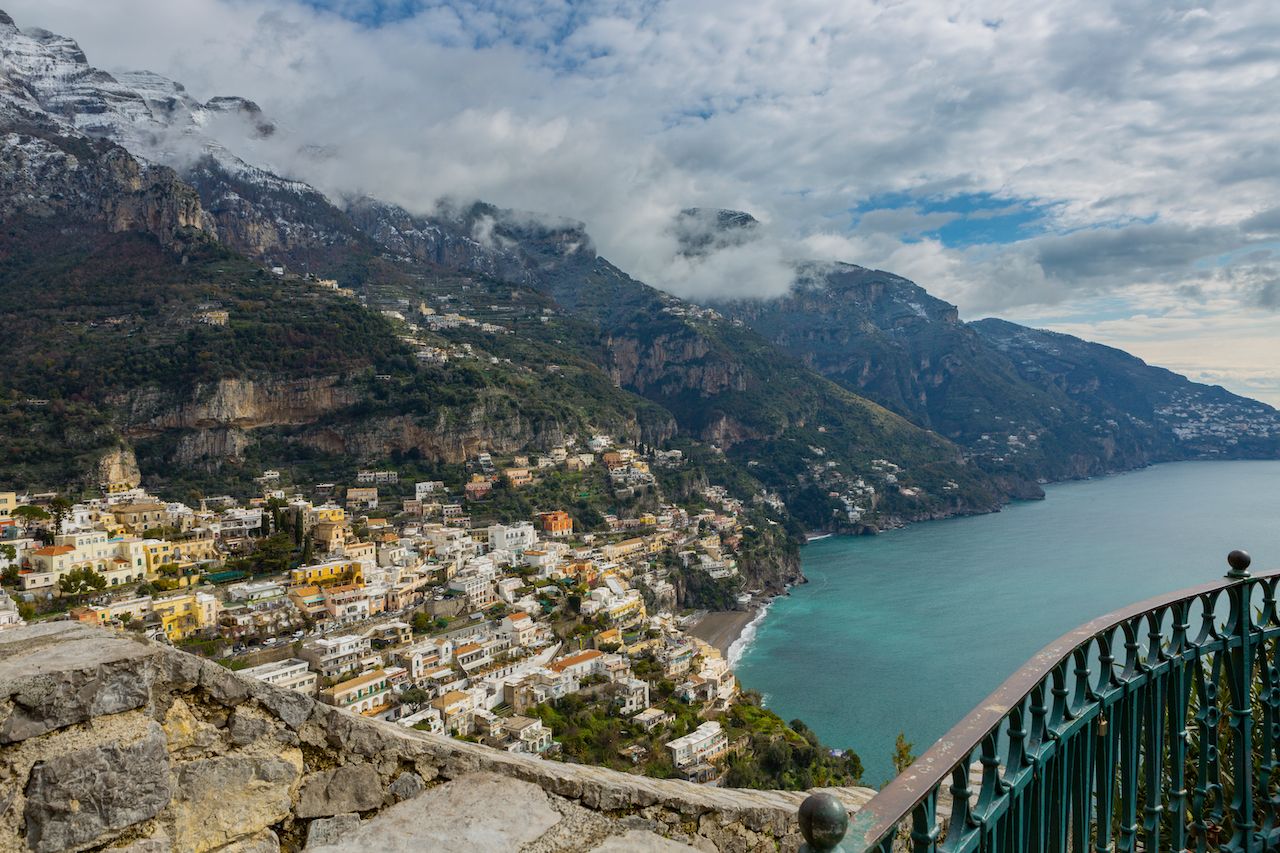
Photo: Marion Carniel/Shutterstock
Seriously. Not only is it expensive AF during the late spring and summer, but the coast’s population is bursting at the seams, and you will spend a frustrating part of each day and night standing in lines (for buses, taxis, boats, restaurants, and shops), getting constantly jostled by crowds and selfie-takers. Early autumn is optimal. Families have departed the area by September, the Salerno Gulf is delightfully warm, and restaurant and hotel reservations are more bountiful and easier to come by. The winter months are the least crowded, but as such, some restaurants are closed and you won’t find the nightlife or block festivals common during drier months.
2. Do not drive.
There is essentially one thoroughfare on this 60-kilometer stretch of Campania’s coastline between Sorrento and Salerno. It is a twisting, two-way, cliff-edge road with blind curves and ultra-high stakes the entire way. At points, the road is so narrow that oncoming buses often have to stop and reverse to let approaching vehicles pass. Plan on taking the public bus (see below) or arrange taxis or ferries in advance.
3. Be flexible with the bus schedule.
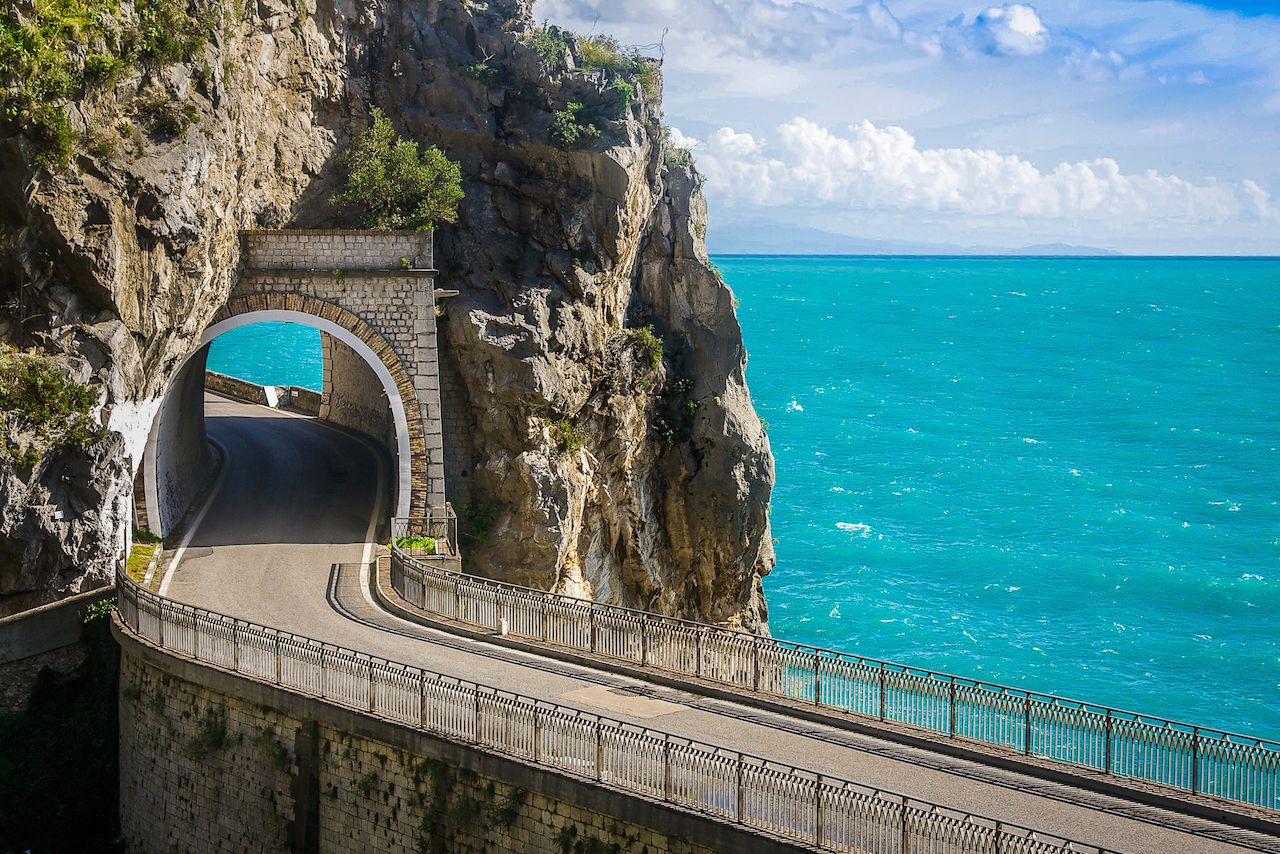
Photo: Pfeiffer/Shutterstock
Due to the aforementioned limitations and challenges of the route, the public bus schedule is sometimes virtually useless. It is not unusual for buses to show up 20 minutes before or after the scheduled time or, if you are visiting in late spring or summer, to roll right by because they are already overloaded with passengers. Plan your routes via the SITA Bus website, but allow for flexibility. There’s always a nearby Limoncello with your name on it if you need to pass some time.
4. Prepare to shell out a lot of dough for taxis.
Fares are based on the number of people in your group and, due to the necessity of traveling through this part of Italy via motorized vehicle and the fact that there aren’t many roads, prices are absurd. Don’t be surprised if you dish out 80 euros for a one-way, 20-minute drive. Consider booking one driver for the whole day on a flat rate if you’re planning on sightseeing.
5. Take a hike.
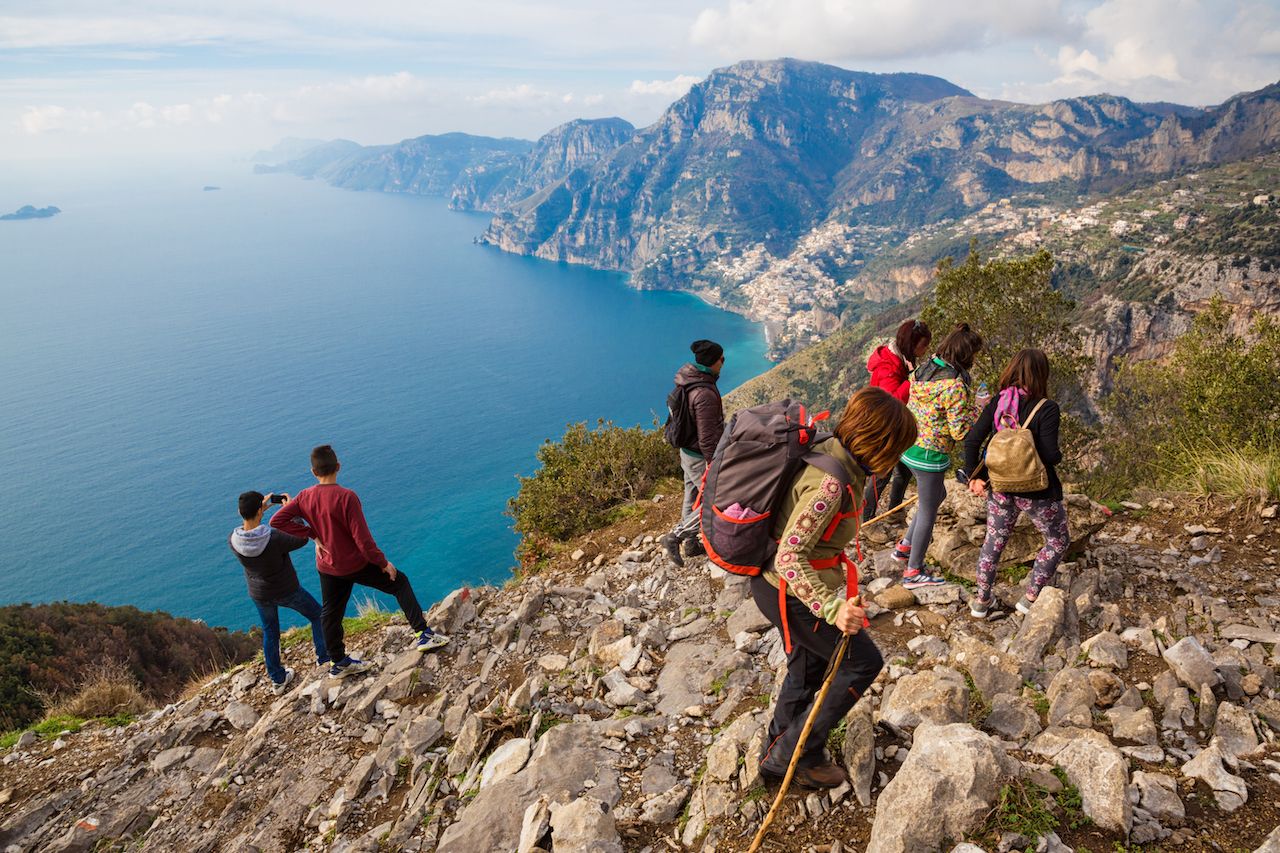
Photo: Francesca Sciarra/Shutterstock
One of the most pleasant ways to take in the beauty of the coast is to travel off-road on foot. The most famous hike on the Amalfi Coast is the Sentiero delle Dei (Path of the Gods), which links Positano to the high cliff town of Agerola, taking you up nearly 2,000 vertical feet in about eight kilometers on lots and lots of ancient staircases. You can hike from the town of Amalfi to Ravello, also wandering up steep, stone staircases through lemon groves and lush foliage with sweeping views of the coast. Another option starting in Amalfi is the Valle delle Ferriere path, which will take you up to the main square of San Lazzaro past glorious waterfalls. Vigorous hikers can reach what is arguably the highest point on the coast by starting in Agerola (the high point of the Path of the Gods route) and trekking 1,000 feet upward to Monte Tre Calli, from where you can see the sprawling gulfs of Sorrento, Salerno, and even Mt. Vesuvius.
6. Visit the smaller, non-touristy towns.
To truly get a flavor of the area, visit Maiori, Minori, Scala, or Conca dei Marini, each of which plays a vital role in the history of the coast and will provide plenty of opportunities to practice your Italian. Conca dei Marini is particularly alluring since it has its own tiny beach (hit it in the morning before the shade falls in the afternoon) and one of the most delightful and reasonably priced restaurants on the coast, La Bonta del Capo.
7. Visit Pompeii first thing in the morning.
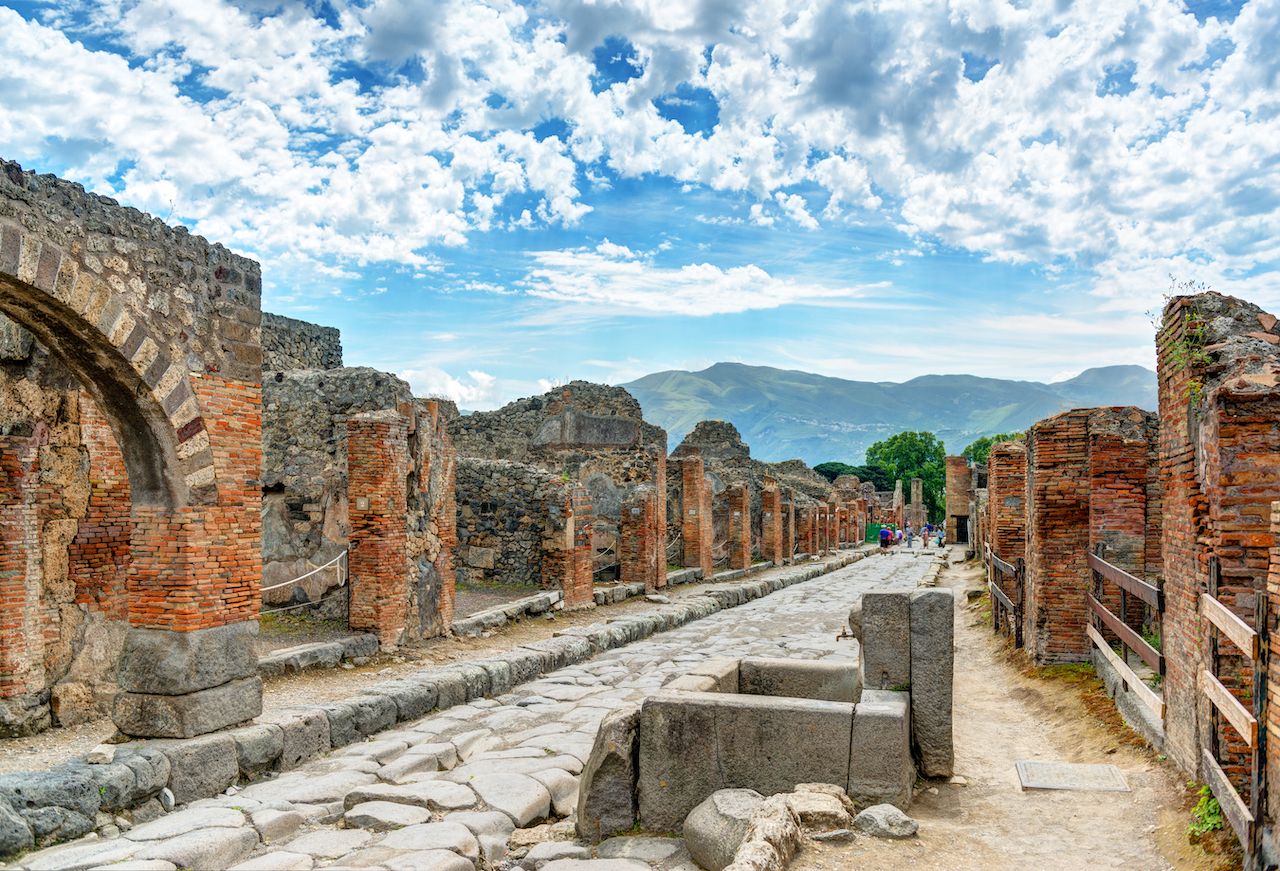
Photo: Viacheslav Lopatin/Shutterstock
You might have to jockey for the best viewing spot of the 2,000-year-old pornographic mosaics with a pack of schoolchildren on any given weekday, but you will be happier making this not-to-miss day trip from the coast if you plan to arrive right when it opens at 9:00 AM before cruise ship crowds disembark and field trips arrive. Another necessity for Pompeii is to download a guide app before you visit. If not, you’ll be clueless, since the brochure that comes with your ticket is simply a map with Roman numerals marking vague locations, and the audio guide available at the ticket window isn’t that great. Signage and information throughout this fascinating, once-buried ancient city is mysteriously non-existent, so to best appreciate what you’re looking at or to know anything about it, download an offline guide and map (Discover Pompeii is a good one) before you arrive.
8. Shop around for souvenirs.
The exact same ceramic lemon ornament you saw in Amalfi for seven euros could very likely be 13 euros in Positano. Like any teeming tourist destination, you’ll see the same trinkets everywhere, but along the coast, prices can vary significantly. Take note of price tags and wait until you find the best buy to avoid getting ripped off.
9. See the coast from a boat or kayak.
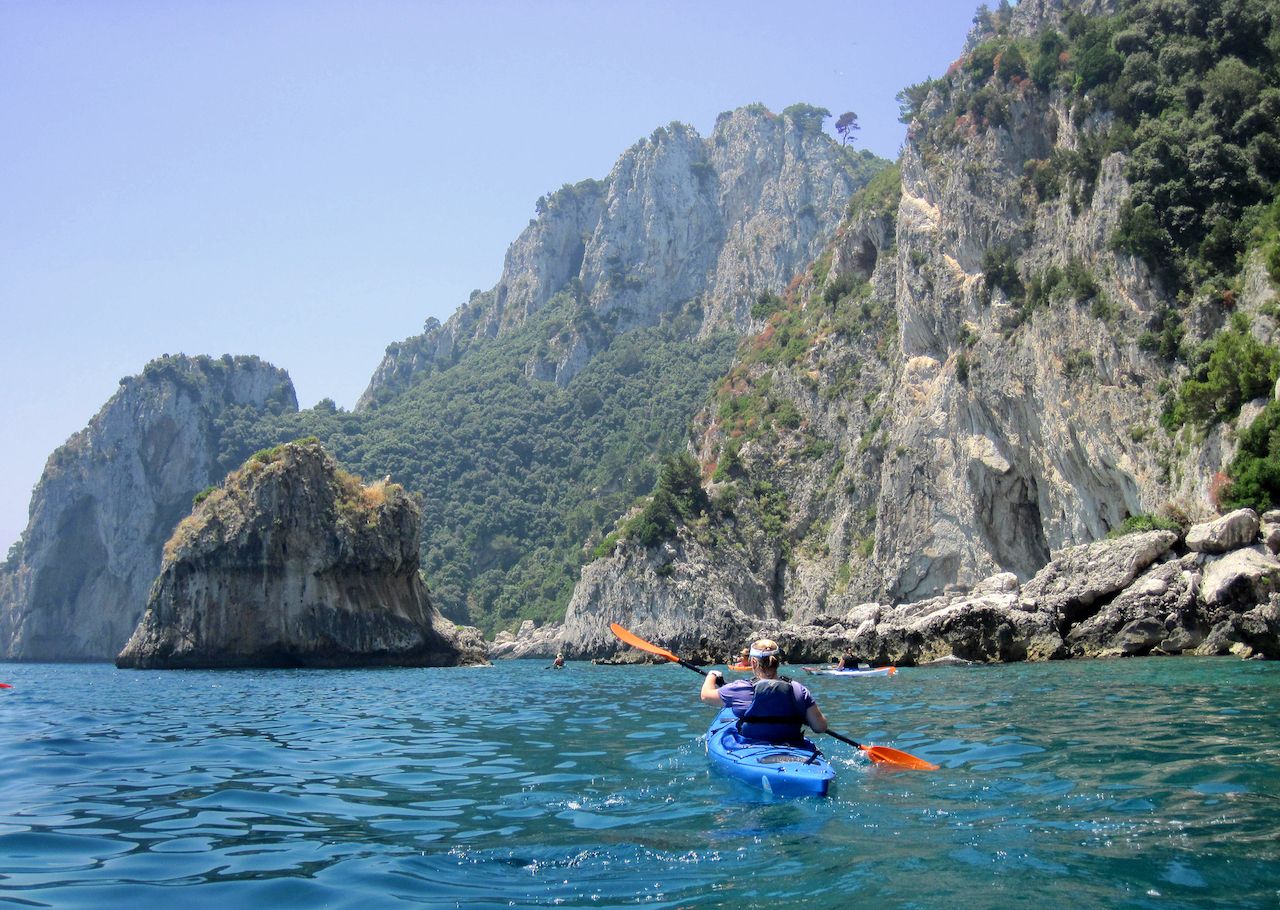
Photo: Elena Arrigo/Shutterstock
Yes, it can be pricey, particularly if you spring for a private vessel, but well worth it to get a pirate’s eye view of the jagged and colorful coastline. Seeing the coast from the water is a magical, full-circle experience. You can rent smaller boats like a Zodiak or a generic motorboat yourself and take it out and save some dough, but opting for a guided trip provides the full experience as you’ll hit the best spots and learn a few things along the way. Try Gianni’s Boat Tours or Exclusive Cruises for motorized options and Amalfi Kayak if you’re up for an arm-powered adventure.
10. But watch out for jellyfish.
There is an infestation all along the coast, so if you venture into the water, keep a sharp eye out for these pinkish blobs that sting like hell. The word for jellyfish in Italian? “Medusa.” That says it all.
11. Find a quiet(er) beach.
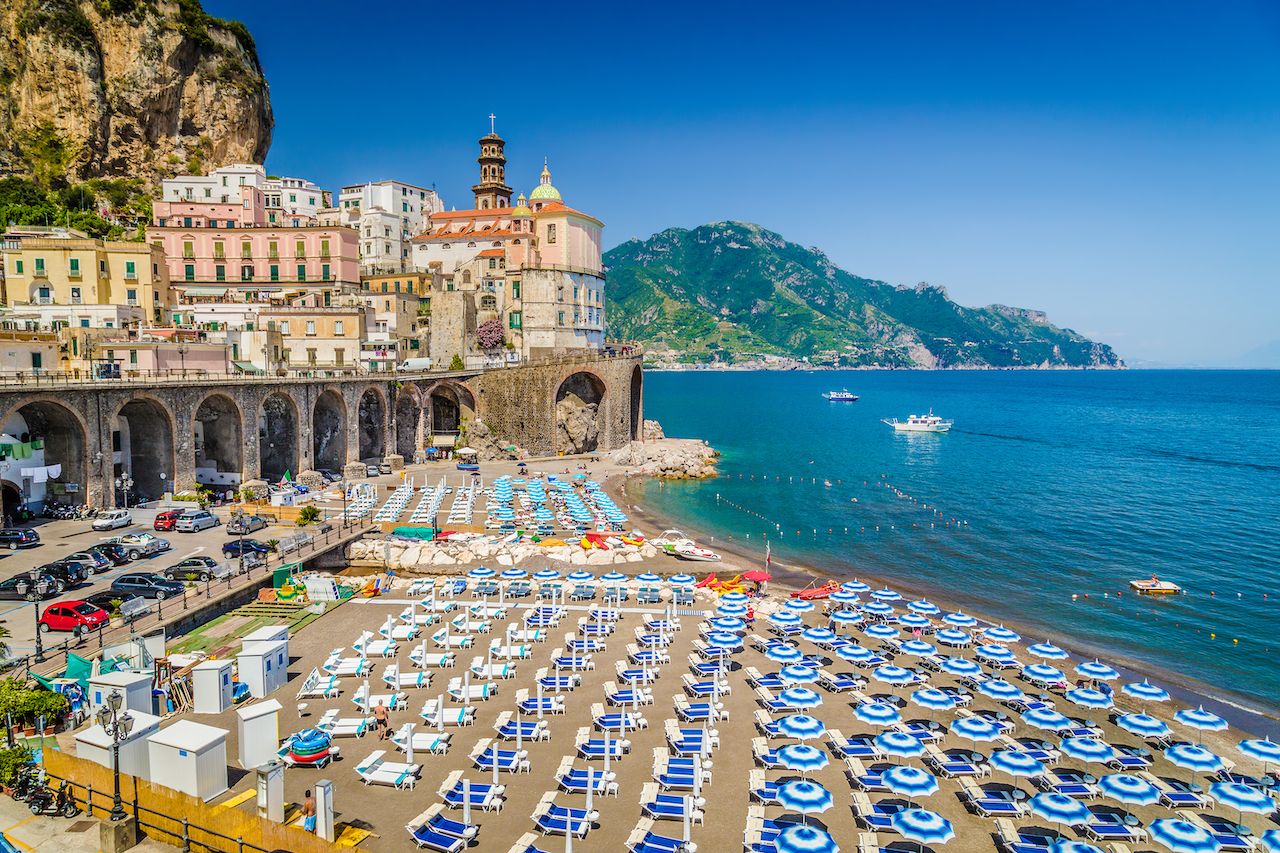
Photo: canadastock/Shutterstock
The main beaches in Amalfi and Positano tend to get packed, but if you wander 10 or 15 minutes afield, you’ll be rewarded by a piece of sand (or, more realistically, pebbles) to call your own where lounge chairs aren’t 25 euros a pop, and the vibe is generally a lot more chill. Atrani Beach lies just east of Amalfi and Fornillo Beach just west of Positano, making it an easy day trip from your Amalfi Coast Airbnb. If hanging on the beach is the number one plan for the day, hit Maiori, Erchie, or Vietri Sul Mare, which has actual sand.